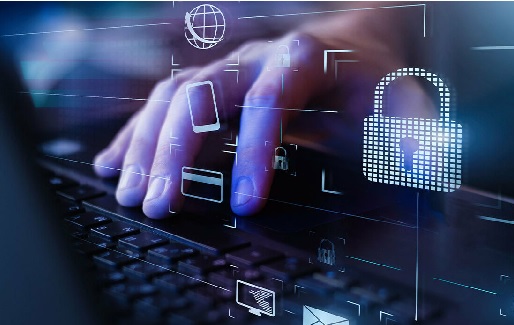
Safe System From Cyber Attacks! We utilize world wide web devices in every part of our lives nowadays. We use the internet to seek information, shop, bank, do homework, play games, and socialize with relatives and friends.
As a result, our devices are filled with a wealth of sensitive information about us.
This could include banking and other accounting transactions, as well as medical information that we want to keep private. Cybercriminals and other fraudsters may be able to have access to devices and steal information if they are not secured.
Fraudsters could contain malicious using a computer as a “zombie drone.” Malicious malware or viruses may infect your computer, decelerating or disk fragmentation.
An intentional penetration of systems and/or connections is referred to as a cyber attack. Malware is used in cyber assaults to breach computers, software, or data in order to steal, leak, or hold information for ransom. Every corporate must protect itself from cyber-attacks.
The Following Are The Necessary Actions To Keep a Safe System From Cyber Attacks:-
Install Internet Security Software
Implementing the best antivirus software on all of your digital devices is the first step toward improved cyber security. Web security software should also safeguard your devices from harmful virus, which is commonly employed in fraudulent activity. Moreover, security software must always be brought up to date. Before turning off the computer, it should be scanned for spyware.
Make Sure Your Hard Drive Is Protected
The internet is simply a route through which a virus travels. The virus’s true destination is the hard disc of the machine. While inside the drive, the malware may be doing a huge amount of damage to the computer, from revealing confidential info to cybercriminals to wiping all of the stuff on the hard drive.
Use a Firewall
A Windows firewall is a critical software application that offers resistance around your computer, avoiding unnecessary inbound and outbound traffic. Take advantage of the operating system’s built-in firewall functionality when configuring or upgrading a computer.
You can modify the firewall policies to meet your needs. Your computer’s firewall protects it from reacting to these sporadic calls. A firewall provides communications both to and from sources that you really do not want. If you’ve had a greater connection to the internet, such as DSL or broadband, this is very critical.
Keep Software Up To Date
It’s vital to keep the operating system and software up to date. Always make sure your devices have the most recent security updates: Set the operating system’s automatic updates to on. Use web browsers that receive frequent, automated security upgrades, such as Chrome or Firefox. Make sure the computer’s plug-ins (Flash, Java, and so on) are up to date.
Be Careful What You Click
Malicious software, in which attackers send an email that appears to be authentic in order to fool you into giving over personal information, is growing increasingly sophisticated. For example, you might get an emergency notice that your checking account has now been blocked and that you really need to provide your passcode and Social Assistance number to restore it.
Explore your position while clicking on the link in emails the kinds of. Most actual economic organization communications will just not explicitly collect personal data, but would instead direct you to contact or visit a website. You can also double-check the sender’s email address to guarantee the message came from the intended sender.
Create a Boot Disk
Even if take the strongest internet security procedures, a malicious cyber assault could still infiltrate the computer. Malicious software can sometimes be so harmful that it distorts computers or networks, rendering them useless.
Restoring the computer to its original (factory) settings is the sole choice for saving it. As a result, if the device did not come with an alternative boot drive, must make one. The majority of individuals use a USB device to generate an operating system.
Don’t Install/Run Unknown Programs
A Trojan horse (or other malicious software) is frequently hidden underneath an application that appears to be fully legitimate and innocent. Hackers can put harmful malware in any program, but they prefer to do it in games and animations since they are so popular among users.
As a result, you just shouldn’t access, activate, or use the software unless you are 100% certain they are trustworthy and authentic. In fact, you should always examine a program with your web security application before downloading it.
Multi-Factor Authentication
Malicious actors who have obtained email addresses and password data through malware, email phishing, or other means are actually prevented by multi-factor authentication. Malicious actors will be unable to get access to the system if they attempt to access employing keys but are unable to retrieve the code sent through text messages or apps.
To keep track of this, set up an alert that will go off whenever a connection attempt has been made from a malicious Ip, and the attacker is unable to get the code delivered to the user’s device.

Back up Your Systems
Reliable backup assets on a regular basis and store them on a fully secured device on a network segment from the main network.
Make sure your backup data isn’t linked to your network access credentials. To prevent attackers from encrypting recoveries in addition to workstations and servers, use distinct and complicated configurations for a backup client to a Network-Attached Storage device.
Keep Up With The Latest Information
The realm of cyber espionage is always changing and expanding. Anti-virus programs that we use now may not be effective against a virus that emerges in a few months. It is necessary to keep up with all of the current cybersecurity trends at all times.
There are numerous good blogs and web pages operated by specialists in the field of cyber security that supply readers with the most up-to-date information about global hacking attacks.
Stay updated on such blogs and join the online community of cyber security professionals dedicated to uncovering and safeguarding against malicious attack.
Use Virtualization
one doesn’t have to go this path, but if one visits shady websites, one may expect to be inundated with spyware and viruses. While avoiding hazardous websites is the best strategy to avoid browser-based intrusions, virtualization allows them to run the browser in a virtual environment, such as Parallels or VMware Fusion, that extends the functionality of the operating system, protecting it.
Use The Internet With Caution
Spyware and viruses can be found on even the most secure websites. A single click of the mouse is all it takes to infect a computer. Many fraudulent websites are disguised to look like legitimate websites.
When inputting URLs, double-check the website’s name and spelling. Popups, advertisements, images, and links to other websites should all be avoided.
Research Basics Of Computer Security
The user is the first line of defense when it comes to digital security. If your firm does not have a security awareness program, you should consider implementing one. Individuals that are adequately taught can better understand how to defend their company’s computer system. Take the time to learn about the fundamentals of information security; it will help you make better judgments when it comes to securing your system.
Turn Off the Computer and Disconnect From the Internet
Even if you leave your computer switched on and linked to the Web, it is still vulnerable to cyber-attacks. As a result, you must totally turn off your computing equipment when you are finished using it. You should also disconnect it from the Internet to ensure that a cybercriminal is unable to access it.
Don’t Open Unknown E-mails And Links
Email is a powerful strategy to deliver dangerous software in addition to being a popular communication tool. Phishing schemes, in which a user is fooled into giving personal information to identity thieves, are especially common via email.
Every email that is received should be scanned using internet security software. Furthermore, never open an anonymous email or click on any links in an email from an unknown sender. Even if the sender appears to be legitimate, all attachments should be scanned using internet security software until being opened.
Configure Strict Web Browser and Email Security Settings-
Establishing rigorous security settings for online browsers and webmail can help to improve cyber security. For example, because hackers frequently utilize JavaScript, it’s a good idea to disable it. Moreover, you can deactivate cookies in your web browser so that no websites track your web surfing activities.
Malware Scanner
Malware analyzers are another low-cost security technique that allows for the proactive detection of malware threats. There are a variety of malware scanners available, with prices and features varying. As with any security measure, keeping a spyware sensor’s system and definitions constantly updated is critical–otherwise, the analyzer may discover problems.
Read Also: Cyber Threat and Security
Use A password Vault
With such a large number of credentials to keep track of these days, it’s easy to fall into the trap of using the same password for various accounts. To unlock a secret vault, you would only have to know the password.
The software automatically alarms credentials for applications, portals, services, and network usernames and passwords using passwords that are extremely complicated and unpredictable, making it incredibly hard for an intruder to guess. A review of the ten most popular password managers was just published in Fortune Magazine.







Very informative